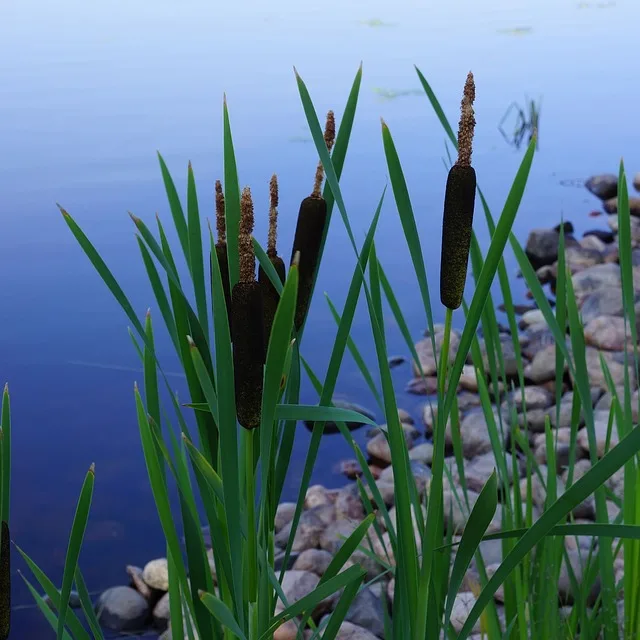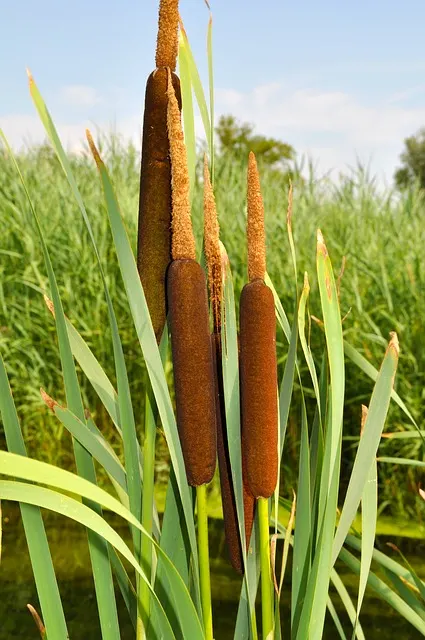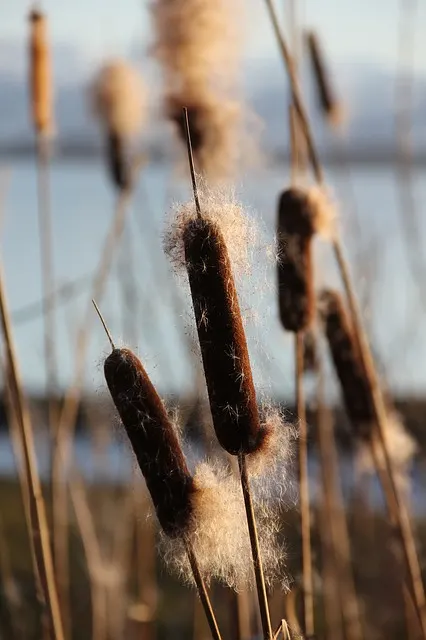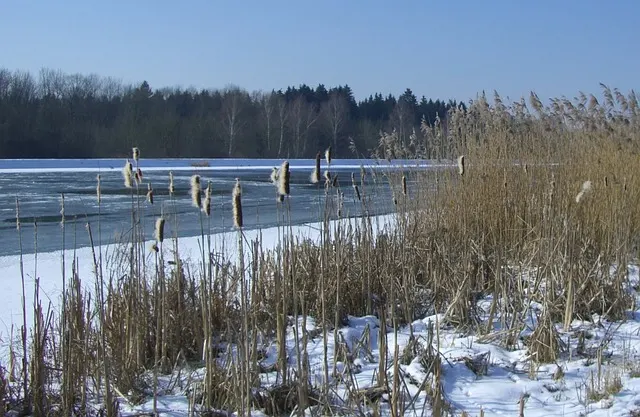Cattails are an extremely useful plant that can be found along streams, rivers, ponds, and lakes – virtually anywhere there is a water source. Did you know that almost every part of the cattail plant is edible?
No matter what time of year you find it, at least one part of the plant is edible. That alone makes it a great plant to know for survival, but that’s not all. Cattail plants can be used for shelters, clothing, medicine, and much more.

4 ways cattails can be used for survival
1. Food
In spring, the young shoots (corms) of the cattail can be eaten raw or cooked. As the shoots mature, they can be peeled and eaten like asparagus.
The female part of the flower (the part that looks like a cob) can be boiled until it is tender and eaten like corn on the cob.
Later, yellow pollen will be visible on the skinny part of the stalk at the top of the brown flower/cob. This can be gathered by bending the stalk over and shaking the pollen into a bag or container. The pollen can be used like flour or mixed with regular flour for baking.
The starchy root can also be harvested and used for flour. After peeling off the outer layer, the inner part of the root can be chopped into pieces, dried, and ground.

2. Shelter & Clothing
The leaves of cattails can be dried and used to weave baskets, hats, chairs, roof coverings, and sleep mats. The grasses are best woven while they are pliable but will retain their strength long after they dry out.
The soft, fluffy part of the flower can be used like feather down to insulate clothing and bedding. Strips of leaves can be braided together to make ropes.

3. Fuel for Heat
Dried-up cattail stalks and leaves from old growth make great fuel for fires. The cottony, fluffy part of the flower makes excellent tinder for fire-starting.

4. Medicinal
The core of a cattail root can be mashed into a poultice that can be applied to cuts, wounds, burns, and stings.
Fluff from the flowers can also be used to treat burns and to prevent chafing on babies when placed in a diaper.
Young flowers can be eaten to treat diarrhea.
See this video about how to identify, harvest, and use different parts of catttails:
There are some plants whose leaves resemble the leaves of cattails that are not edible. When looking for young plants in the spring, look for the dried-up stalks of last year’s growth to make sure you have the correct plant before harvesting.
http://www.eattheweeds.com/cattails-a-survival-dinner/
http://www.bio.brandeis.edu/fieldbio/medicinal_plants/pages/Common_Cattail.html